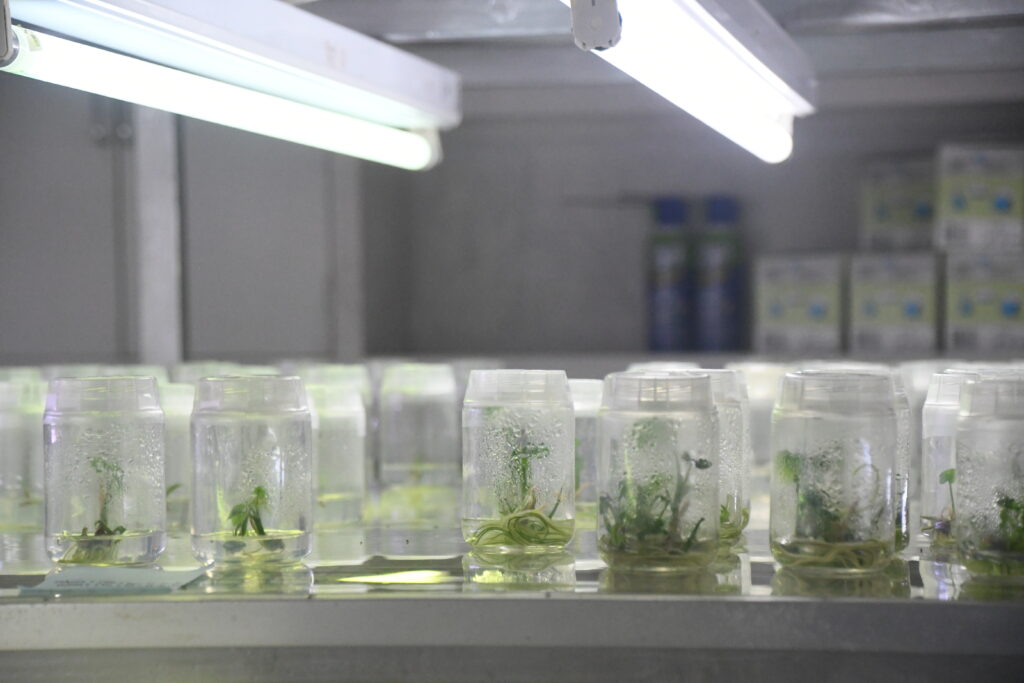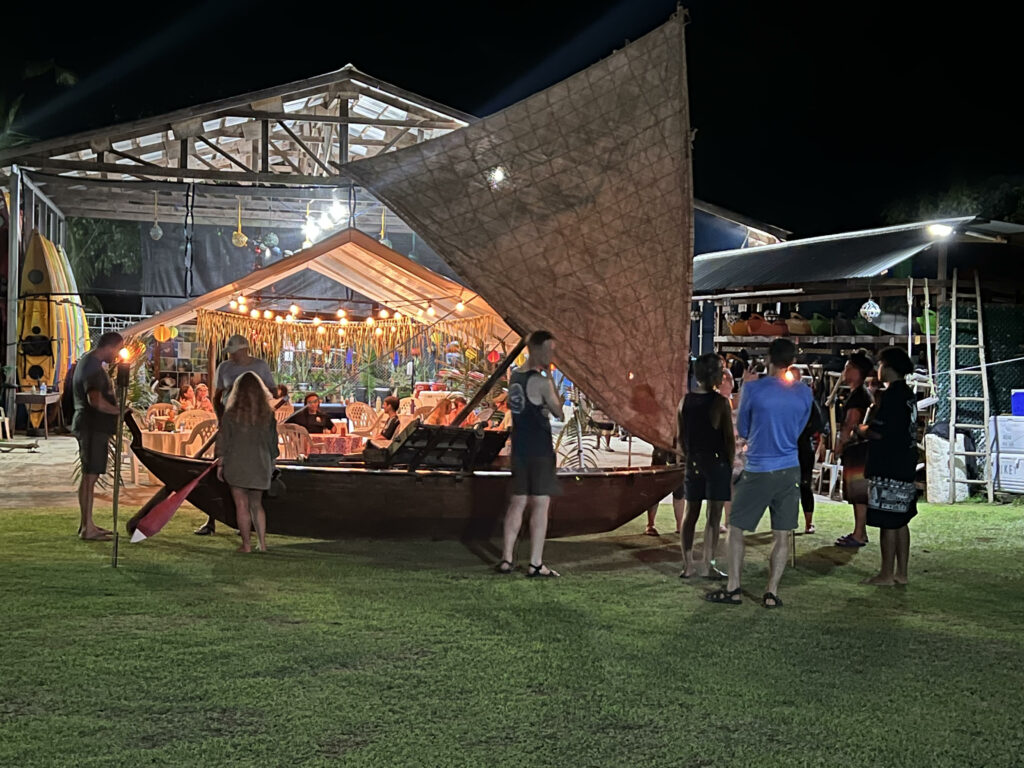We started off our morning by piling into our three touring vans. The Disco Van took up the rear and discussed favorite fiction and non-fiction books while jamming out to house music and reggae. Other vans appreciated a sleepy ride in the early morning. Our first destination was the Palau Community College’s Cooperative Research Extension to learn about taro experiments led by Dr. Yin Yin Nwe. Dr. Nwe discussed the efforts to learn about the different taro species and how their different strengths can lead to better food security for island communities across the Pacific. The research has led to more than 2,000 taro plant materials delivered annually to communities.


Under Dr. Nwe’s tutelage, we learned how to culture plant tissues in a sterile environment, placing them in agar mediums to asexually propagate them for further research. Due to the size limitations of the lab, we split into two teams—one cutting and propagating the plant samples, while the other half toured the research fields and participated in a separate cultivation technique.
The first group learned how to propagate and sterilize month-old taro plants. First, the lab tools are dipped in an alcohol solution then lit on fire to fully sterilize. The plants were carefully extracted from their growing medium and placed on the lab table. The roots and shoots of the taro plants were removed and divided into offspring plants. The offspring cuttings were then placed in a new agar solution to encourage further growth.

The second group completed a propagation process with larger parent plants. This began by harvesting the taro and cutting both the corm and leaves from the stem. After cleaning the lower portion of the stem, we carved away the outer layers and soaked the cube-like sections in a bleach solution for thirty minutes. Once sterilized, we carefully dissected, shaped, and placed each cube into agar solutions with a rooting hormone to promote growth.

After we finished in the lab, the groups met up for lunch provided by PCC and enjoyed a tour of the rest of PCC’s research facilities. The research extension raises swine and chickens for protein, while also harvesting the manure to use as a valuable soil amendment. When combined with waste vegetation and properly aerated, the mixture forms compost within only two weeks. Next, we toured their taro patches, where we also learned about cultivation of sweet potatoes, lemongrass, Palauan apples, pineapples, and other native fruit trees that are grown alongside the taro. Each variety was carefully monitored and managed by the local women, who can easily identify each type of taro by assessing the color and shape of the leaves, stem, and corm. PCC and Dr. Nwe work closely with local Palauans to preserve the diversity of taro species around the island and identify the best management methods for each variety.

Upon returning back to base, we had a short break before heading back out to meet with Ron Leidich and his crew from Rock Island Kayak Expeditions (RIKE). Leidich gave an overview of his work cataloguing new species found on the Rock Islands, which will serve as a perfect jumping-off point for our upcoming two days of activities that he will be leading. He explored topics such as the compounding effects of COVID-19 and tourism on biodiversity. One concept he expanded upon was that of ecological innocence of species – ones that are so remote, they have never encountered humans and are therefore curious and unafraid of human contact. One danger reefs face is the threat of the crown of thorns starfish, which can eat up to its bodyweight of coral in 24 hours. The starfish are indirectly encouraged by tourism, which led to a discussion of the future of ecotourism in Palau. We took a dinner break provided by RIKE, which included potato salad, grilled snapper, pork ribs, and poke. Our closing activity after dinner was to view a boat made by Bradman Yarofalibug and other master craftsmen with traditional techniques—heavily resembling the boat from the movie Moana – unsurprising as Moana drew heavy inspiration from Palau among other Pacific Islands. The boat is seaworthy for the occasional trip out on the ocean.


